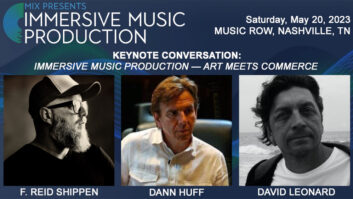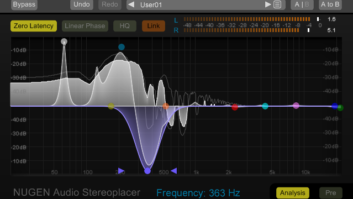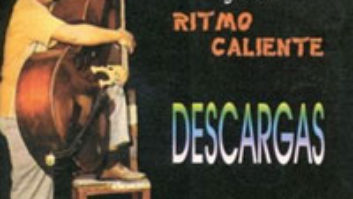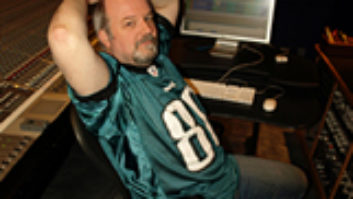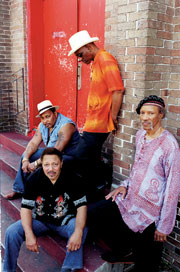
The Neville Brothers are (clockwise from bottom left) Art Neville, Aaron Neville, Cyril Neville and Charles Neville.
It’s been five years since New Orleans’ Neville Brothers recorded an album in the studio. During that time, they’ve toured plenty, as they always have, ripping it up coast to coast with their incendiary funk, raucous Mardi Gras party anthems and socially conscious tunes that have been dipped in the group’s deep reservoir of rock, R&B and gospel influences. Not surprisingly, their new album, Walkin’ in the Shadow of Life (Backporch/EMI Records), is a family affair through and through. Besides the frontline of seemingly ageless brothers — heavenly voiced Aaron, keyboard funkster Art, reed titan Charles and singer/percussionist Cyril — the disc features Aaron’s son Ivan on keys and Art’s son Ian on guitar.
Most of the songs were either written or co-written by various Nevilles, and they reflect the brothers’ commitment to family, community and spiritual nourishment. And the two cover songs chosen for the disc say much about where the Neville Brothers are coming from: Their gorgeous, mostly a capella version of “Rivers of Babylon,” originally cut in 1969 by Jamaican group The Melodians (and popularized on the soundtrack of The Harder They Come) is about banding together to overcome adversity; and their swirling, high-octane, lyrically updated take on the 1970 Temptations hit “Ball of Confusion” captures the manic energy of a world seemingly spinning out of control.
Walkin’ in the Shadow of Life marks the first Nevilles album to be recorded in their own studio, which is located on the second floor of a house in the heart of the French Quarter. “They took the upstairs of this house and completely gutted it,” says engineer James Bevelle, who, along with album producer Milton Davis, hails from Alabama. “Then they built a control room, put in Pro Tools, a Control24, lots of outboard gear and, of course, a lot of plug-ins. We had mics all over the place, even in the bathroom — which did sound pretty good,” he says with a laugh. When I ask Art Neville whether the studio reminds him of the old New Orleans house where the group had recorded their landmark late-’80s albums, Yellow Moon and Brother’s Keeper, with Daniel Lanois and Malcolm Burn, he says, “Yeah, except this place is really ours. We still had to pay in that other place. This one really feels like home.”
Producer/musician Davis and engineer Bevelle have worked on a number of projects together through the years, and they decided from the outset that they wanted the Neville’s album to reflect the best of old and new technology. So there is some scratching, loops and other hip hop elements that give the disc a contemporary sheen, but the bass lines — all by Davis — “are all reinforced with Arps and Moogs, the same Moog sub-bass is on just about every track,” Davis notes. “It gives an extra kick to the funk; we wanted this to be a very funky album.
“You don’t go in and work with the Neville Brothers and try to change what they’re great at,” he continues. “We knew from the beginning it was going to be Rhodes and B3 and Charles’ saxophone and lots of percussion, and then all those great vocals. That’s who they are. We spent a lot of time in the studio working on grooves, just jamming really, and a few songs came out of that.” Besides playing bass, guitar, some keys, percussion and programming, Davis co-wrote a number of songs on the album; indeed, his strength as a writer is one reason he was chosen for the project.
“They were looking for a cohesive record where each song was like a chapter in a book and the lyrics and the sonics held it all together,” he adds. “It’s almost like an autobiography.” Some tracks were worked from the rhythm up; others featured a number of musicians at once in the studio. A few are fragmentary jams showcasing one or more of the brothers. “They would come in and out as they were needed,” Davis says, “but when it came to the vocals, most of those were done with everyone at the same time.”
“It’s amazing how they lock in on those harmonies,” Bevelle adds. “They’re so good at stacking.” Bevelle did a lot of ghosting on vocal parts and also used outboard and plug-in delays to good effect on vocals and guitars.
“Man, James Bevelle is like Mr. Spock,” marvels Art Neville. “He knows stuff with his eyes closed. Anything we wanted — anything — he was able to do it. Between him and Milton Davis, we really could really cover a lot of ground pretty fast. This was a fun record to work on for us. Everything felt great, everyone was involved.”
Still, Art is completely upfront about his intentions for the album: “We want to reach people with our message,” he says. “This album is talking to people — to the kids. Whether they’ll listen or not, I don’t know. Maybe some of our older fans will have to pass the lessons along. But the world is in turmoil right now so we had to say something. It’s a message and a story. And, hopefully it’s right on time. Check it out, man.”
